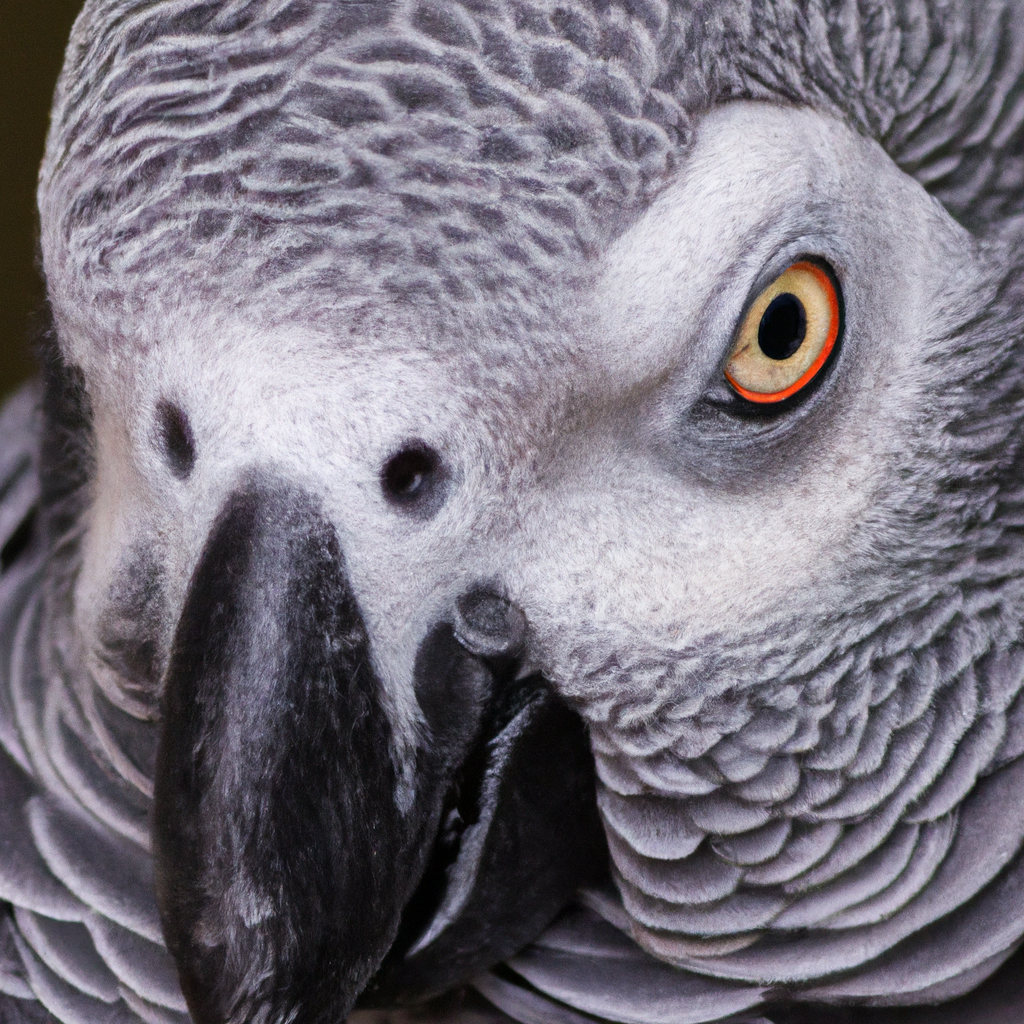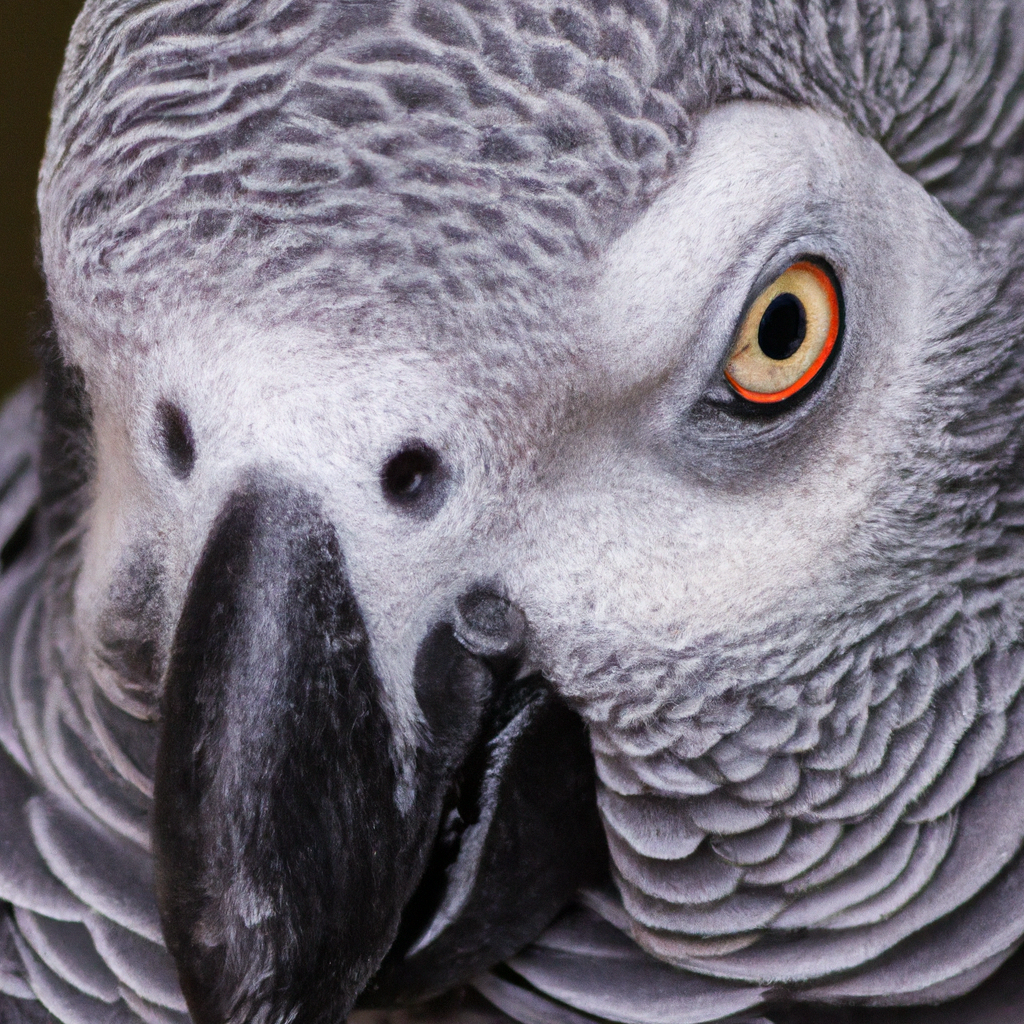Have you ever marveled at the intelligence and charm of the African Grey Parrot? Known by its scientific name Psittacus erithacus, this captivating creature has captured the hearts of bird enthusiasts all around the world. With its striking gray feathers and stunning red tail, the African Grey Parrot stands out in the avian world. But it’s not just its physical appearance that sets it apart. Renowned for its exceptional intelligence and ability to mimic human speech, this remarkable parrot has become a beloved companion to many. In this article, we will explore the fascinating world of the African Grey Parrot, uncovering its unique characteristics and shedding light on why it is considered one of the most fascinating birds on the planet.
Physical Description
Size and weight
The African Grey Parrot is a medium-sized bird, typically ranging in size between 12 and 14 inches (30-36 cm) in length. They have a wingspan of approximately 20 inches (50 cm). As for their weight, adult African Grey Parrots generally weigh between 12 and 16 ounces (340-450 grams), with males usually being slightly heavier than females.
Feathers
The feathers of the African Grey Parrot are predominantly ash-gray or charcoal in color, with a striking contrast of bright crimson on their tail feathers. Their feathers are somewhat fluffy and give them a soft appearance. These birds have strong, durable feathers that are excellent for flight and insulate them well in both warm and cold temperatures.
Beak
One of the distinguishing features of the African Grey Parrot is its large, deeply curved beak. Their beak is strong and sharp, designed for cracking open hard nuts and seeds. It has a black coloration and is capable of exerting significant force when needed. The beak is also used for exploring and manipulating objects in their environment.
Eyes
The African Grey Parrot’s eyes are large, round, and framed by a narrow white eyering. The color of their eyes is usually dark brown or black. However, when they are excited or engaged, their eyes may dilate, giving them a more intense, captivating appearance. They have excellent eyesight and can quickly detect motion, allowing them to be alert and responsive.
Tail
African Grey Parrots have long, slender tails, which make up a significant portion of their body length. The tail feathers are predominantly gray with subtle hints of red towards the tip. They use their tails to maintain balance and control during flight, helping them maneuver with agility through the forest canopies where they reside.
Coloration
As the name suggests, the African Grey Parrot has a primarily gray plumage. However, their beautiful feathers also contain undertones of silver and light shades of brown. They have intricate patterns of darker gray or black feathers on their bodies, giving them a distinguished appearance. The vibrant red color on their tail feathers adds a wonderful contrast and a touch of elegance to their overall appearance.
Habitat
Natural range
The African Grey Parrot is a native of the dense rainforests of West and Central Africa. Its natural range extends across countries such as Congo, Ghana, Cameroon, and Ivory Coast. These parrots are well-adapted to their forest habitat, where they flourish among the tall trees, canopy layers, and lush vegetation.
Preferred habitats
Within their natural range, African Grey Parrots prefer areas with a high canopy cover and a variety of tree species. They are commonly found in lowland rainforests, as well as adjacent savannahs and woodland areas. Their ability to adapt to various forest types allows them to thrive in different climatic conditions.
Nesting sites
African Grey Parrots nest in tree cavities, usually high above the ground for added protection and safety. They carefully select suitable nesting sites that provide shelter from predators and harsh weather conditions. They may use old woodpecker holes or create their own nesting cavities by chewing into soft wood. These parrots are known for their exceptional nest-building skills.
Diet
Feeding habits
The African Grey Parrot has a predominantly herbivorous diet, consisting of a variety of fruits, nuts, seeds, and vegetation. They are also known to consume flowers, buds, and even small insects or snails on occasion. In the wild, they spend a significant amount of time foraging for food, using their beak and feet to hold and peel fruits or crack open nuts.
Wild diet
In their natural habitat, African Grey Parrots have access to an abundance of fruits, such as figs and oil palms. They also consume a wide range of nuts, including oil palm nuts and shea nuts. Additionally, they feed on various seeds, including those of acacia trees. Their diet may vary depending on the specific region and the availability of food resources.
Captive diet
When kept in captivity as pets, African Grey Parrots require a well-balanced diet to meet their nutritional needs. This typically includes a combination of high-quality parrot pellets, fresh fruits and vegetables, nuts, and occasional protein sources, such as cooked chicken or eggs. It is important to provide them with a varied diet to ensure their health and well-being.
Behavior
Social structure
African Grey Parrots are social creatures and form strong bonds with their family groups or flocks. In their natural habitat, they live in small to medium-sized flocks consisting of a few dozen individuals. Within these flocks, they exhibit complex social interactions, including cooperative breeding and mutual grooming. They are also known to communicate and share information with each other through various calls and vocalizations.
Intelligence
African Grey Parrots are widely recognized as one of the most intelligent bird species. They have a remarkable ability to mimic and comprehend human language, often displaying a vocabulary of several hundred words. Their high level of intelligence allows them to problem-solve, exhibit curiosity, and demonstrate advanced cognitive skills. They are quick learners and can develop a deep understanding of their environment.
Vocalizations
The vocalizations of African Grey Parrots are one of their most captivating traits. They have the ability to mimic both natural sounds and human speech with incredible accuracy. These parrots can imitate a wide range of sounds, including musical tunes, whistles, and household noises. They use vocalizations as a means of communication, expressing their emotions, and establishing their presence within their social group.
Mating and breeding
African Grey Parrots form lifelong monogamous pairs, meaning they mate with one partner for their entire lives. During the breeding season, which varies depending on their location, they engage in courtship rituals that involve displaying their feathers, vocalizing, and performing various acrobatic displays. The female parrot usually lays 2 to 4 eggs in a nesting cavity, and both parents take turns incubating them for about 28 days.
Mimicry
One of the most remarkable and entertaining aspects of African Grey Parrots is their ability to mimic human speech and other sounds. With their exceptional vocal control and learning capabilities, they can accurately mimic words, phrases, and even entire conversations. This mimicry is not simply a parrot repeating sounds; they can also associate meaning to certain words and use them appropriately in context.

Conservation Status
Threats
African Grey Parrots face several threats in their native habitat, primarily due to human activities. Habitat loss and fragmentation are significant concerns as forests are being cleared for agriculture, logging, and infrastructure development. Illegal trapping for the pet trade is another major threat, as these parrots are highly sought after due to their intelligence and ability to mimic human speech. Additionally, the use of pesticides and hunting may impact their populations.
Protection efforts
To mitigate the threats faced by African Grey Parrots, conservation organizations and governments have implemented various measures. These include establishing protected areas, enacting legislation to regulate the pet trade, and raising awareness about the importance of conserving these magnificent birds. Conservation initiatives also aim to educate local communities on sustainable land use practices and the value of preserving the parrots’ natural habitat.

Interaction with Humans
Captivity
The African Grey Parrot is a popular choice among bird enthusiasts and is often kept as a pet due to its intelligence, charm, and ability to mimic speech. However, it is essential to consider the significant responsibilities and commitment required to provide proper care, stimulation, and socialization for these highly intelligent birds. Captive African Grey Parrots thrive in environments that offer mental stimulation, interactive toys, and regular social interactions with their human caregivers.
Communication with humans
African Grey Parrots have excellent communication skills and can develop deep bonds with their human caretakers. They are known to understand and respond to verbal cues, body language, and even emotions. Through positive reinforcement training techniques, they can be taught to perform various tricks, follow commands, and engage in interactive activities. Their ability to mimic speech adds an additional dimension to their communication with humans.
Adaptation as companions
When kept as companions, African Grey Parrots can form strong and lasting bonds with their human caregivers. They thrive in environments where they receive ample mental and physical stimulation, as well as social interaction. Their intelligence and ability to mimic speech make them fascinating and entertaining companions. However, their long lifespan (often exceeding 50 years) means that potential owners must be prepared for a lifelong commitment and the necessary care these remarkable birds require.
In conclusion, the African Grey Parrot is a magnificent bird with a distinctive physical appearance, remarkable intelligence, and captivating vocal abilities. They are well-suited to their natural forest habitats, where they exhibit social behaviors, complex communication, and an impressive adaptability to their surroundings. However, their populations are threatened by habitat loss and the illegal pet trade. Efforts are being made to protect and conserve these parrots, and they can also thrive as engaging and entertaining companions for those willing to provide them with the necessary care and stimulation.
